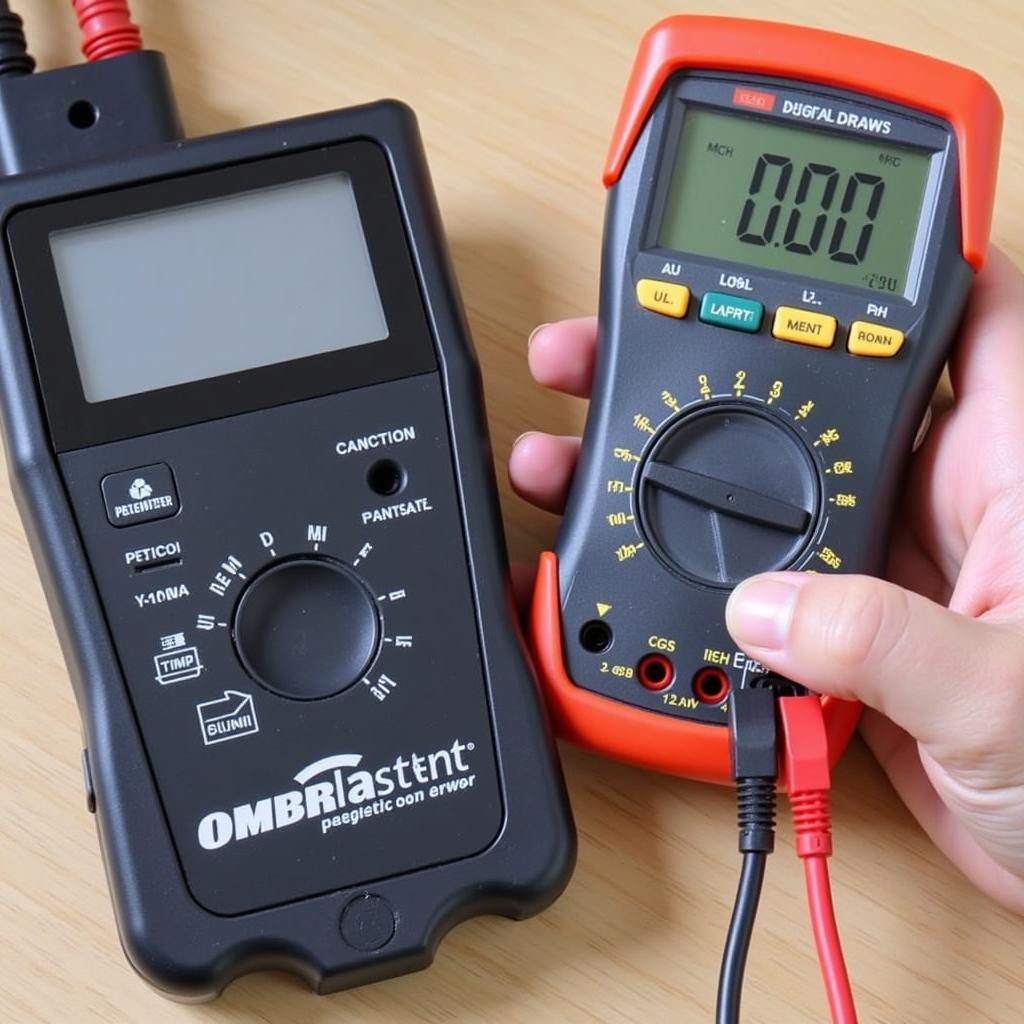A parasitic test car refers to the process of testing a vehicle’s electrical system for parasitic draws, also known as phantom loads or key-off drains. These draws can slowly drain your car battery, leaving you stranded with a dead battery or a vehicle that won’t start. Understanding how to perform a parasitic test is crucial for maintaining your car’s electrical health.
A parasitic draw occurs when a circuit in your vehicle continues to consume power even after the ignition is turned off and the key is removed. This can be caused by faulty components, such as a glove box light that stays on, a malfunctioning radio, or even a faulty relay. Identifying and eliminating these parasitic draws is essential for preserving battery life and ensuring reliable vehicle operation. Over time, even a small parasitic draw can significantly shorten the lifespan of your battery.
What Causes a Parasitic Draw in a Car?
Several factors can contribute to a parasitic draw. Common culprits include interior lights, door switches, faulty wiring, aftermarket accessories, and even the car’s computer modules. Sometimes, a seemingly insignificant issue, like a stuck relay, can lead to a significant drain on the battery. Knowing how to systematically troubleshoot these potential issues is key to finding the parasitic draw. After identifying the likely cause of the dead battery, you may want to take a look at our guide on dead battery or dead alternator.
How to Perform a Parasitic Test
Performing a parasitic test involves disconnecting the negative battery cable and measuring the current flow between the cable and the battery terminal. This measurement indicates the amount of current being drawn by the circuits while the car is off. A small amount of draw is normal, but anything excessive points towards a parasitic draw.
- Gather your tools: You’ll need a digital multimeter, preferably one with a milliamp setting, and some basic hand tools.
- Prepare the vehicle: Turn off all accessories, lights, and ensure the ignition is off.
- Disconnect the negative battery cable: Carefully disconnect the negative cable from the battery terminal.
- Connect the multimeter: Connect the red lead of the multimeter to the negative battery cable and the black lead to the negative battery terminal.
- Set the multimeter: Set the multimeter to the milliamp (mA) setting.
- Observe the reading: The reading on the multimeter represents the parasitic draw. A reading of 50mA or less is generally considered acceptable. Anything higher indicates a problem.
 Parasitic Draw Test Setup
Parasitic Draw Test Setup
Identifying the Source of the Parasitic Draw
Once you’ve confirmed a high parasitic draw, the next step is to isolate the source. This can be done by systematically removing fuses one at a time while observing the multimeter reading. When the reading drops significantly after removing a particular fuse, you’ve identified the circuit containing the parasitic draw. You may find this article helpful in diagnosing a dead battery vs alternator.
“A common mistake people make is assuming their battery is bad when it’s actually a parasitic draw draining it,” says John Smith, Senior Automotive Electrical Engineer at Smith Automotive Solutions. “Performing a parasitic test can save you time and money by correctly diagnosing the problem.”
Diagnosing and Fixing Parasitic Draws with Remote Software
Modern vehicles are increasingly reliant on complex electronic systems, which makes diagnosing parasitic draws more challenging. Remote software solutions are becoming increasingly popular for their ability to access a vehicle’s diagnostic data remotely. These tools allow technicians to analyze the vehicle’s electrical system, identify potential problems, and even program certain modules without needing physical access to the car. For more insight into differentiating between a dead alternator or battery, check out our comprehensive guide.
“Remote diagnostics have revolutionized the way we troubleshoot electrical problems, especially parasitic draws,” explains Jane Doe, Lead Diagnostics Technician at Doe Automotive Diagnostics. “The ability to pinpoint the issue remotely saves valuable time and allows for quicker repairs.”
Conclusion
Understanding and performing a parasitic test car is crucial for maintaining your vehicle’s electrical health. Whether you’re an experienced DIYer or a professional technician, knowing how to identify and eliminate these phantom loads can save you time, money, and frustration down the road. By utilizing the right tools and techniques, you can keep your car’s battery healthy and your vehicle running smoothly. A simple parasitic test car can prevent a dead battery and keep you on the road. When tackling battery problems, it’s always useful to understand the difference between a car battery dead alternator. Alternatively, you might find our article on a dead battery vs dead alternator helpful.


